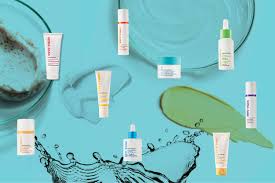Introduction to the Science of Beauty
Beauty is more than skin deep. It’s a complex interplay of science, biology, and chemistry that shapes how we perceive ourselves and the world around us. From the latest serums to age-defying creams, beauty products promise miracles. But what truly works?
As consumers navigate through a sea of options, understanding the science behind these products becomes essential. What do those ingredients actually do? How can you choose wisely in a market flooded with claims? Let’s dive into the fascinating world where beauty meets science, uncovering effective solutions for your skin concerns along the way. Get ready to explore what really makes beauty products tick!
A. What is beauty?
Beauty is a concept that transcends mere appearance. It resonates deeply within cultures, philosophies, and individuals.
At its core, beauty embodies harmony and balance. It’s about how elements come together to create something appealing. Whether it’s in nature or art, there’s an allure that captivates us.
Our perception of beauty varies from person to person. What one finds stunning might not hold the same value for another. This subjective experience makes beauty intriguing yet complex.
Beauty also reflects emotions and experiences. A radiant smile or a serene landscape can evoke feelings of joy or peace.
In this way, beauty connects us all despite our differences, creating bonds through shared appreciation and admiration for what we deem beautiful in the world around us.
B. How does it relate to science?
Beauty is often perceived as subjective, shaped by culture and personal preferences. However, science provides a concrete foundation for understanding what makes products effective.
Through rigorous research, scientists analyze how ingredients interact with the skin at a molecular level. This investigation reveals why certain compounds yield visible results while others fall flat.
For instance, studies demonstrate the effects of antioxidants on skin aging and inflammation. By discovering which molecules penetrate deeper layers of skin or stimulate collagen production, researchers can create targeted solutions that genuinely enhance beauty.
Moreover, technological advancements allow for innovations in product formulation and delivery systems. This means that consumers can benefit from cutting-edge developments designed to maximize efficacy.
As we delve into the world of skincare products, it becomes clear that science plays a pivotal role in defining beauty standards—and ultimately helping individuals achieve their desired aesthetic goals.
Understanding Your Skin
Understanding your skin begins with recognizing its structure. The skin has three main layers: the epidermis, dermis, and hypodermis. Each layer plays a crucial role in protecting your body, regulating temperature, and providing sensations.
The epidermis is the outermost layer and acts as a barrier against environmental factors. Below it lies the dermis, home to blood vessels, hair follicles, and connective tissue. The hypodermis anchors everything down while storing fat for insulation.
Skin types vary widely among individuals—oily, dry, combination or sensitive. Knowing your type can help you tailor your skincare routine effectively.
Common concerns like acne or dryness stem from various factors such as genetics or lifestyle choices. Understanding these nuances allows for better product selection that addresses specific needs without causing further issues. This knowledge empowers you to choose treatments that truly benefit your unique skin profile.
A. The layers of skin and their functions
The skin is a remarkable organ, composed of three primary layers: the epidermis, dermis, and hypodermis. Each layer has distinct functions that contribute to overall skin health.
The outermost layer is the epidermis. It acts as a protective barrier against environmental threats like bacteria and UV radiation. This layer constantly regenerates itself through cell turnover.
Beneath lies the dermis, which houses blood vessels, nerves, and connective tissue. The dermis provides strength and elasticity thanks to collagen and elastin fibers. It’s also responsible for temperature regulation due to its rich vascular network.
The hypodermis serves as an insulator while anchoring skin to underlying structures such as muscles and bones. Composed mainly of fat cells, it helps absorb shock and store energy.
Understanding these layers can help you choose products tailored specifically for your skin’s needs.
B. Common skin types and concerns
Understanding your skin type is crucial for choosing the right products. Each type presents unique concerns that necessitate specific care.
Oily skin often grapples with excess shine and clogged pores. This can lead to breakouts, making it essential to utilize lightweight, oil-free formulations.
Dry skin frequently appears dull and may feel tight or flaky. Hydration becomes key here; look for rich creams that provide moisture without irritation.
Combination skin features both oily and dry patches, which can complicate routines. A dual approach works best—using lighter textures on oily areas while applying richer creams where dryness prevails.
Sensitive skin tends to react easily to new products. It’s vital to opt for gentle formulations free from harsh chemicals or fragrances.
Normal skin enjoys a balance but isn’t immune to occasional issues like dryness or breakouts. Regular maintenance helps keep this type healthy and vibrant, ensuring it remains in prime condition.
Ingredients That Actually Work
Not all ingredients in beauty products deliver on their promises. Some stand out for their proven effectiveness.
Retinol, a derivative of vitamin A, is a powerhouse against aging. It promotes cell turnover and helps reduce the appearance of fine lines and wrinkles.
Vitamin C is another essential ingredient that brightens skin tone and fights free radicals. It enhances collagen production, making your skin more resilient.
Hyaluronic acid deserves attention too; this hydrating hero holds up to 1,000 times its weight in water. Your skin will feel plumper and more youthful after just one application.
For those battling acne, consider salicylic acid. This beta hydroxy acid penetrates pores to exfoliate from within and clear away impurities effectively.
Other ingredients like niacinamide can also regulate oil production while improving texture—ideal for combination or oily skin types.
A. Anti-aging ingredients
When it comes to combating aging, certain ingredients shine brightly in the realm of skincare.
Retinol is a standout hero. This derivative of vitamin A works deep within the skin, promoting cell turnover and boosting collagen production. Users often notice smoother texture and reduced fine lines.
Vitamin C deserves attention too. It’s a powerful antioxidant that brightens the complexion while fighting free radicals. Regular application can lead to more radiant skin and improved elasticity.
Then there’s hyaluronic acid, known for its incredible moisture-retaining properties. It draws water into the skin, plumping it up and minimizing those pesky wrinkles.
Together, these ingredients create a formidable lineup against aging signs. Each one plays a distinct role in rejuvenating your skin’s appearance while enhancing its overall health.
I. Retinol
Retinol is often hailed as a powerhouse in skincare. It’s derived from vitamin A and plays a crucial role in promoting cell turnover. This means it helps your skin shed dead cells, revealing fresher layers underneath.
One of the standout features of retinol is its ability to reduce fine lines and wrinkles. By stimulating collagen production, it plumps the skin and improves texture over time.
Additionally, retinol addresses dark spots and uneven skin tone. With consistent use, you may notice brighter, more radiant skin.
However, it’s important to start slowly. Retinol can cause irritation for some users when introduced abruptly into their routine. Gradually increasing usage allows your skin to adjust while still reaping the benefits.
Always pair retinol with sunscreen during the day; this ingredient makes your skin more sensitive to sun exposure. Your efforts will be rewarded with a smoother complexion that truly shines through.
Ii. Vitamin C
Vitamin C is a powerhouse ingredient in the beauty world. Known for its brightening properties, it helps to even out skin tone and reduce dark spots. This vitamin also plays a crucial role in collagen synthesis, promoting firmness and elasticity.
When applied topically, Vitamin C can boost your skin’s radiance while fighting free radicals. These pesky molecules contribute to premature aging and dullness. By incorporating this potent antioxidant into your routine, you’re essentially giving your skin an extra layer of protection against environmental stressors.
Formulations vary widely—from serums to creams—making it easy to find one that fits seamlessly into any skincare regimen. Look for stable forms like ascorbic acid or sodium ascorbyl phosphate for maximum efficacy.
With consistent use, you’ll likely notice brighter, healthier-looking skin over time. It’s no wonder why Vitamin C has secured its spot as a staple in many beauty products that truly work wonders.
Iii. Hyaluronic acid
Hyaluronic acid is a powerhouse ingredient in the world of skincare. Known for its incredible ability to retain moisture, it can hold up to 1,000 times its weight in water. This makes it a favorite among those seeking plump and hydrated skin.
When applied topically, hyaluronic acid penetrates deep into the skin layers, providing hydration where it’s most needed. It works by drawing moisture from the environment and infusing it into your skin barrier.
Beyond hydration, this ingredient helps improve elasticity and reduce the appearance of fine lines. As we age, our natural levels of hyaluronic acid decrease. Incorporating products with this ingredient can replenish what’s lost over time.
You’ll find hyaluronic acid in serums, moisturizers, and even some masks. Using these products regularly ensures your skin remains supple and refreshed throughout the day. The science behind this simple molecule showcases just how effective beauty products can be when they harness nature’s best ingredients.
B. Acne-fighting ingredients
Acne can be a frustrating battle for many. Thankfully, certain ingredients have proven their worth in the fight against blemishes.
Salicylic acid is a hero in this realm. It penetrates pores to dissolve excess oil and dead skin cells. This action helps prevent clogged pores, reducing breakouts over time.
Another powerhouse is benzoyl peroxide. It works by killing acne-causing bacteria on the skin’s surface while also helping to dry up existing pimples.
Tea tree oil has gained popularity as a natural alternative. Its antimicrobial properties soothe inflammation and help eliminate bacteria without harsh chemicals.
Niacinamide deserves a mention too; it regulates sebum production and improves skin texture, making it an excellent choice for those battling post-acne scars or uneven tone.
When searching for products that really work, these ingredients stand out in the science of beauty treatments designed specifically for acne-prone skin.
I. Sal
The world of skincare can often feel overwhelming. With countless products and promises, it’s essential to rely on science for guidance.
When it comes to acne-fighting ingredients, salicylic acid stands out as a powerhouse. This beta hydroxy acid penetrates deep into the pores, helping to dissolve excess oil and dead skin cells that contribute to breakouts. By exfoliating from within, salicylic acid not only helps prevent new blemishes but also reduces inflammation associated with existing pimples.
Many people have seen remarkable results in their quest for clear skin through consistent use of products containing this ingredient. Its ability to address the root causes of acne makes it a favorite among dermatologists and skincare enthusiasts alike.
Understanding how these elements work together reveals the true essence of beauty. When you equip yourself with knowledge about effective ingredients backed by science, finding products that really work becomes less daunting—and much more reward


